Time Waits for No One but Pauses for You
TIME WAITS FOR NO ONE BUT PAUSES FOR YOU
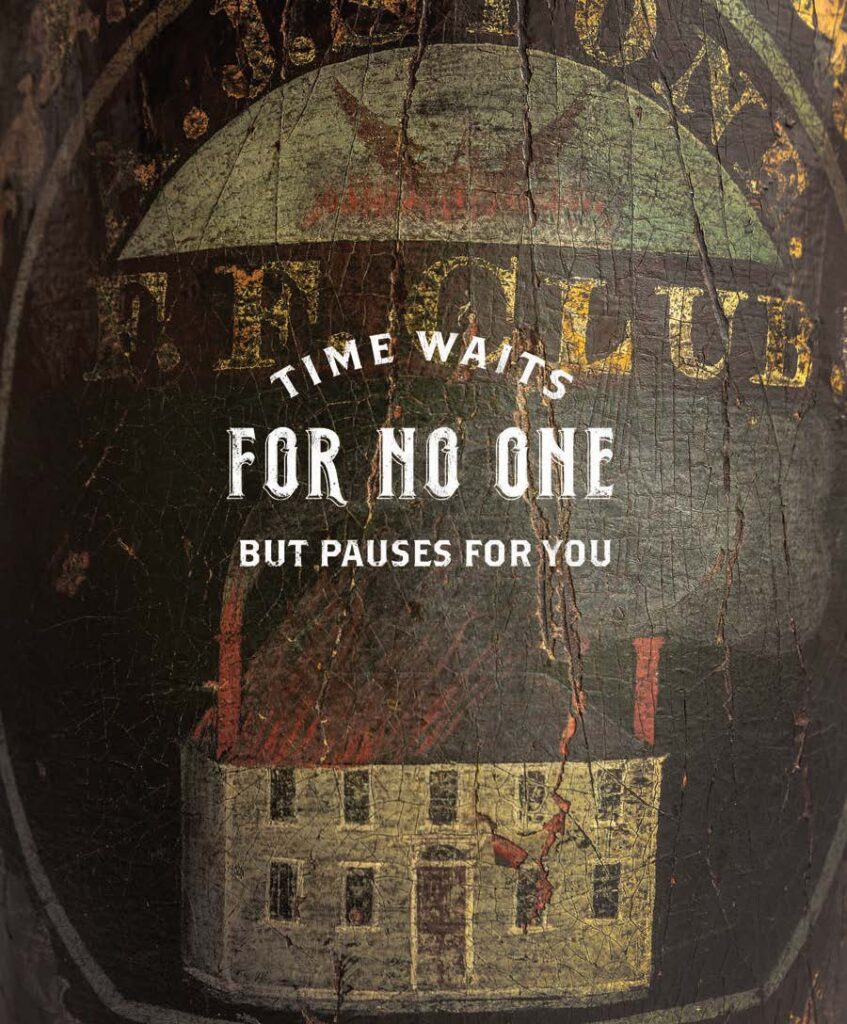
The stories within Greensboro History Museum’s stories are seen through an ever-evolving lens
By Billy Ingram • Photographs by Bert VanderVeen
One hundred years ago this month, history buff Mrs. Alice Bell founded the Greensboro Historical Museum, at first a purely aspirational effort seeking to canonize treasures of living memory related to the establishment and rapid growth of this then unassuming small town. That objective surely proved challenging for those who followed in Bell’s footsteps, when the 20th century unfolded and Greensboro became synonymous in the minds of too many Americans as being, all too often, most decidedly, on the wrong side of history.
Coinciding with the seventh anniversary of Armistice Day, the Greensboro Historical Museum’s first public showing in 1925 consisted primarily of war era relics (Revolutionary, Spanish-American, Confederate and WWI), along with examples of evolving women’s fashions. Located in the downtown library’s basement, hundreds of historically significant curios salvaged from attics and closets around town neatly presented in five display cases “all that the museum association had funds for.” Admission for the couple of hundred people in attendance then, as it is now, was free.

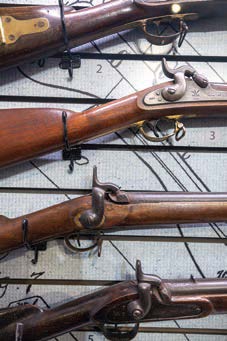
In 1930, the museum, an all-volunteer, mostly female effort, took up residence in a former schoolhouse on Cypress Street until 1939, when the public library, with the museum and other civic organizations in tow, was installed in the original First Presbyterian Church building facing Summit Avenue. In 1964, the Greensboro Public Library relocated to North Greene Street, where Elon University School of Law is today, allowing the museum to expand into the entire 17,000-square-foot space, since expanded, it still occupies today.
Carol Ghiorsi Hart, director of the Greensboro History Museum for the last 12 years, and Curator of Community History Glenn Perkins walked me through the challenging yet inspiring task involved in weaving relevant and engrossing narratives around our city for limited-run events while simultaneously nurturing and preserving a sanctuary devoted to Greensboro’s pivotal role in major historical events — the fight for our nation’s independence; the ending of the Civil War, sparking an Industrial Revolution in the South; sitting at the forefront of women’s suffrage; being a major military presence during World War II; and, its decades spent suspended on a razor’s edge during the struggle for civil rights and equality.
The staff must be in harmony with whomever it was that said “history gives answers only to those who know how to ask questions.” A fairly recent acquisition, but one of the oldest American artifacts the museum owns, is a knitted cap from the Revolutionary War. “We’ve done some DNA analysis on what may be a blood stain from that cap.” Awaiting the results, Perkins contends that just possessing a historical item is only the beginning of a journey of discovery, but “If you take good care of these things, they’ll continue to tell stories.”
Because of its affiliation with the Smithsonian Institute, not long ago, an original copy of the Emancipation Proclamation signed by Abraham Lincoln was on loan to our museum. Of course, anyone could find a scan of the document online or purchase a reproduction. “But,” Director Hart says, “the number of people who came to be in the presence of something Lincoln signed, who literally wept seeing it, was such a powerful moment.”
Museums in general are struggling, but the key to survival lies in adapting to an ever-shifting culture, with the focus no longer pointing inward. “Although we do have incredibly talented people, very knowledgeable,” Hart emphasizes, “there’s a recognition that, especially for a history museum, members of our community are authorities as well as we are — that we are all working together not only to document history, but to help shape what history looks like.”
That means taking what some might consider to be small family stories and placing them on equal footing with more well-known names around town. “Greensboro’s history is one of arrival,” Hart says. “There’s a reason we’re called The Gate City and why, when people are drawn here for whatever reason, they bring change and vitality to the city.”
Inside the “This Just In” case greeting visitors on the second floor there’s a collection of hair crimpers, turners and curlers used by entrepreneur Pauline Farrar McCain, who attended Maco Beauty College in the late-1940s. “Maco was a Black-owned hair business,” an institution that trained over 1,000 beauticians between 1935 and 1969, Perkins explains, “established by folks who came to this city, the Londons, to make their own fortune.” After graduating, McCain went to work for Foust Beauty Shoppe (“Where There’s Hair There’s Hope”) on East Market, subsequently purchasing it in 1960.
While hairstyles were being set back at her shop in the ’60s, McCain could often be found just blocks away participating in Civil Rights marches. For the last five decades, Foust Beauty Shoppe was located at 414 E. Market, where Mrs. McCain continued to oversee operations until her passing in 2020. “She was a community hub,” says Director Hart. “Often it’s not just about what we have on display, but how we can build on some of these stories and fill in some gaps.”

There was an exhibit 10 years ago on the Warnersville community that not only brought forth “a lot of oral histories, but also photographs and other things we hadn’t collected previously,” Perkins says. “We had another focusing on second generation Asian Americans, another story that goes way back to the turn of last century, and the different businesses that were owned by Chinese immigrants.”
“Voices of a City” is the main attraction on the second floor, an Aladdin’s cave of life-sized, interactive dioramas arranged in a panoramic maze, each corner and corridor along this veritable time tunnel a snapshot of life from pioneer days forward. At the push of a button, excerpts from oral histories and historical testimonies augment the visuals, which are both exhaustive and stunning in their presentation.
For instance, one exhibit in this hall might seem incongruous, but is actually a clever juxtaposition. A familiar metal-and-neon sign that hung for decades in Blumenthal’s clothing store, enticing customers with a free pack of cigarettes if their receipt matched the numbers listed on the sign, that now hangs above an assortment of early contraptions used in denim manufacturing. Near the railroad tracks on South Elm, Blumenthal’s, from 1926 until 2005, was the young folks’ go-to retailer for Levis and Wranglers, while selling cigarettes manufactured locally at cost, even giving smokes away, to boost denim jeans sales.
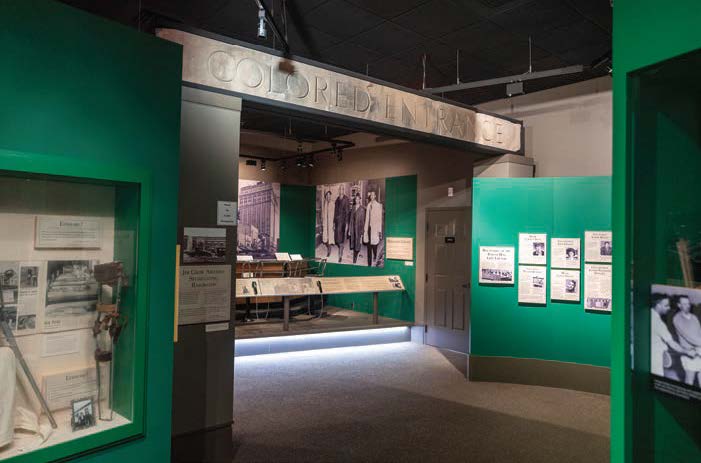
There’s an alcove devoted to Army Air Force’s (AAF) Basic Training Center No. 10, later designated ORD (Overseas Replacement Depot). Surrounded by colorful propaganda posters enticing folks to “Buy Bonds” is one of the bunk beds tens of thousands of inductees slept in while being trained in ground and air combat for some of the most decisive battles of World War II. The largest U.S. military base located inside the limits of a city was situated down and around East Bessemer Avenue from 1943 until 1946.
“Most people think a history museum is going to be filled with a lot of dusty old stuff and be sort of boring and be all about dates and places,” Hart points out. “So one of the things we’re trying to do is to shift that perception a little bit.”
Where else could one experience the momentary joy of reconnecting with ripples from a past thought to be lost forever? For me, it was seeing once again the Art Deco neon WBIG Radio sign that hung in its studio, beginning in the 1930s, recently restored at great effort — then, hearing the voice of WBIG’s legendary morning show DJ and family friend Bob Poole. A nod to our city’s rich broadcasting legacy, with tributes to George Perry and Sandra Hughes of WFMY-TV, WGHP sportscaster Charlie Harville, and WEAL’s Alfred G. Richard.
A bone of contention for museums lately has been an inadvertent stockpiling of culturally significant items appropriated by amateur archeologists or gathered up unthinkingly on foreign shores as souvenirs. “We sent back a number of things that were treasures of war during World War II that came into the museum.” Consisting of Japanese dog tags, good luck flags and other ephemera that American soldiers brought home with them, Perkins says they realized, “Those don’t belong here. Part of our work is returning things to appropriate places, and that can be part of the inhale-exhale of a museum.”
Making collections more readily accessible to the public is a primary goal moving forward, with transcripts of oral histories and some 15,000 photographs already easily searchable online through UNCG’s Gateway project (gateway.uncg.edu/greensboromuseum).
Bernard Cone’s photo albums from 1900 through the 1910s; The Art Shop owner Charles Farrell’s photographs highlighting the city’s growth from the 1920s into the 1940s; Greensboro Fire Department scrapbooks; maps of Greensboro and Guilford County dating back to the 1870s; documents pertaining to local union organizing; the Abraham H. Peeler Papers, chronicling the evolution of African American education locally; letters, memorabilia and documents belonging to writer William Sydney Porter (O. Henry); these are just an inkling of the museum’s digital footprint.
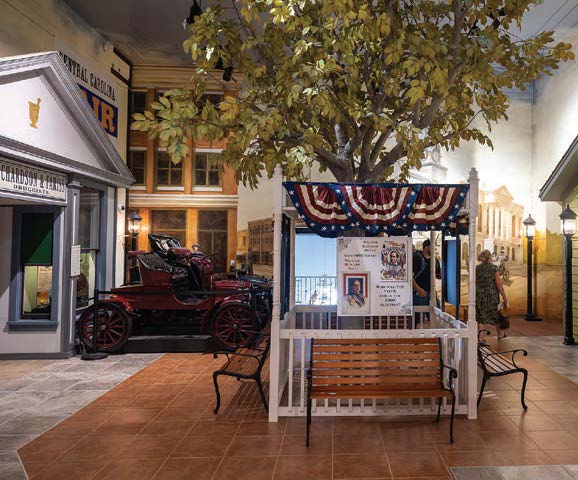
Greensboro History Museum members receive a twice-a-month digital newsletter, a printed ROAR newsletter, early notice on happenings, plus invitations to members-only gatherings. There are also behind the scenes tours for contributors. “People love to go behind locked doors,” Director Hart says. “We have on the order of 30,000 objects, most are in storage but not in dusty boxes in the basement, they’re well cared for and numbered.”
During one of those “backstage” tours you can view rarities not currently on display or possibly never before seen by the public. Take, for instance, a pristine velvet, silk-lined cloak, embroidered with Indian or Iranian gold stitching from 1805 and gifted to future First Lady Dolley Madison by the first Muslim diplomatic ambassador to visit the United States. This item of clothing is significant for a number of reasons, not the least being that, back in 1789, Morocco was the very first country to recognize the United States as an independent nation, before the Revolutionary War had been won.
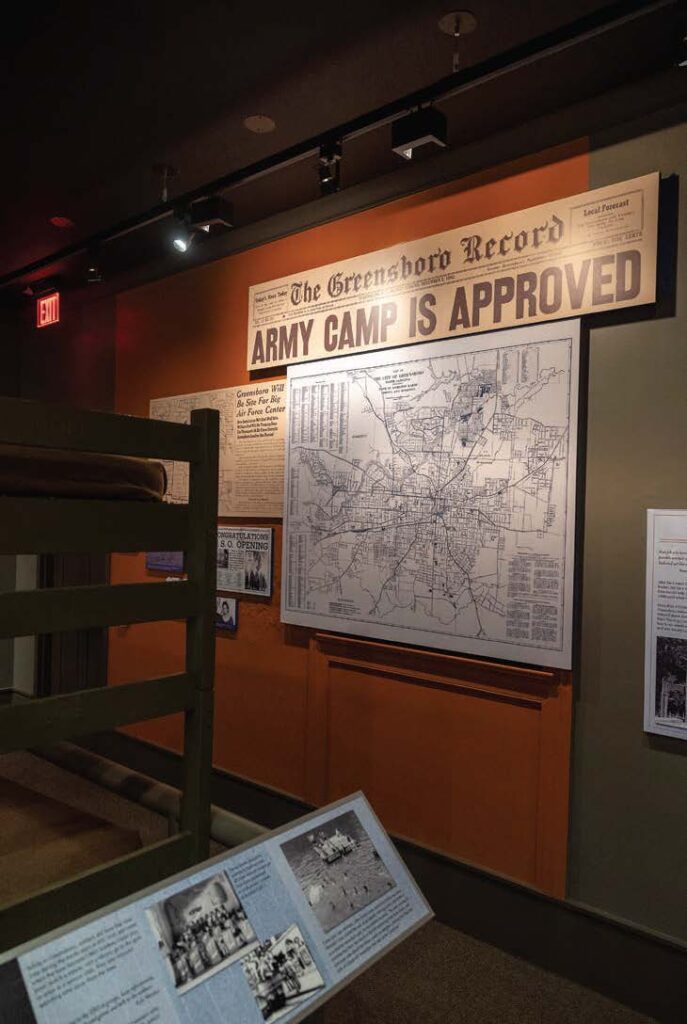
Because I have great admiration for our world class GFD, a wooden bucket with a leather strap dated 1828 was brought down from storage for us to photograph, typical of those used by fire brigades long before Greensboro had any form of an organized fire department. Two hundred years ago, first responders (neighbors) would pass one bucketful of water at a time down a line of volunteers, from the well to the flames and back again to refill. Taking great pride in their efforts, those sturdy pails were decorated with the brigade’s logo and other flame-related flourishes.
It’s true, we will never again walk casually through the unencumbered doorways of youth, bathed in the warmth of worlds that long ago ceased revolving. Tipping back into the deepest recesses of memory, connecting even momentarily to people and places associated with what the march of time has mercilessly (or mercifully) bulldozed in its path, is the continuing contribution our Greensboro History Museum offers all of our lives, year in and year out, hopefully for the next 200 years.

